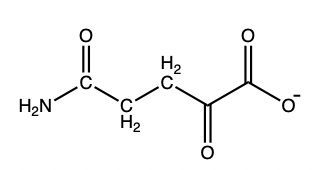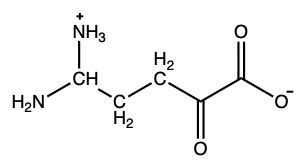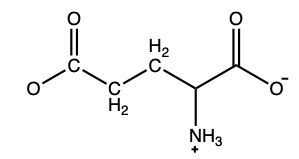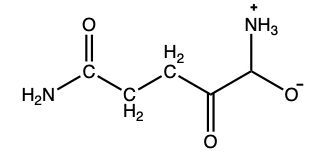In this video, we'll focus on amino acid catabolism in relation to the amino group. Now, here we're going to say the first stage of amino acid catabolism is the removal of the amino group in the liver. Now, this is a two-step process. We're going to say process A is called transamination, process B or process 2 is oxidative deamination. Now, if we take a look here, we see that we have our macromolecules of proteins, carbohydrates, and lipids. You're paying close attention to the digestion of proteins, so we're seeing how that creates our amino acids. Within our cytosol here, we're going to see that our amino acids through transamination, we have the removal of the amino group, and that occurs within the cytosol. Here, if we take a look, our amino acid, we have transamination. We see that we can have the formation of what we call an alpha-keto acid. We'll go into greater details of this; this is just a broad overview of what's going on. We're going to say here, through transamination we also have the generation of what's called Glutamate. This occurs within the mitochondria. And here, we are looking at the mitochondrial matrix in which it occurs. Now, here, once we have our Glutamate, we go into the second part of this process which is oxidative deamination. This is the formation of our Ammonium ion which is NH4+ and again it's occurring within the mitochondria. So through oxidative deamination, we have the formation of the ammonium ion. And then, we also have if we cross the mitochondrial membrane back into the cytosol, we have the alpha-ketoglutarate being produced as well. So here we have stage 1, stage 2 is occurring within the cytosol. We're going to say here that part of this traverses across the mitochondrial membrane into the mitochondrial matrix where we have glutamate, the production of the ammonium ion, and then going back across the mitochondrial membrane, we have our Alpha Ketoglutarate. So just keep in mind, when it comes to amino acid catabolism in relation to the amino group, we have transamination and then oxidative deamination.
- 1. Matter and Measurements4h 29m
- What is Chemistry?5m
- The Scientific Method9m
- Classification of Matter16m
- States of Matter8m
- Physical & Chemical Changes19m
- Chemical Properties8m
- Physical Properties5m
- Intensive vs. Extensive Properties13m
- Temperature (Simplified)9m
- Scientific Notation13m
- SI Units (Simplified)5m
- Metric Prefixes24m
- Significant Figures (Simplified)11m
- Significant Figures: Precision in Measurements7m
- Significant Figures: In Calculations19m
- Conversion Factors (Simplified)15m
- Dimensional Analysis22m
- Density12m
- Specific Gravity9m
- Density of Geometric Objects19m
- Density of Non-Geometric Objects9m
- 2. Atoms and the Periodic Table5h 23m
- The Atom (Simplified)9m
- Subatomic Particles (Simplified)12m
- Isotopes17m
- Ions (Simplified)22m
- Atomic Mass (Simplified)17m
- Atomic Mass (Conceptual)12m
- Periodic Table: Element Symbols6m
- Periodic Table: Classifications11m
- Periodic Table: Group Names8m
- Periodic Table: Representative Elements & Transition Metals7m
- Periodic Table: Elemental Forms (Simplified)6m
- Periodic Table: Phases (Simplified)8m
- Law of Definite Proportions9m
- Atomic Theory9m
- Rutherford Gold Foil Experiment9m
- Wavelength and Frequency (Simplified)5m
- Electromagnetic Spectrum (Simplified)11m
- Bohr Model (Simplified)9m
- Emission Spectrum (Simplified)3m
- Electronic Structure4m
- Electronic Structure: Shells5m
- Electronic Structure: Subshells4m
- Electronic Structure: Orbitals11m
- Electronic Structure: Electron Spin3m
- Electronic Structure: Number of Electrons4m
- The Electron Configuration (Simplified)22m
- Electron Arrangements5m
- The Electron Configuration: Condensed4m
- The Electron Configuration: Exceptions (Simplified)12m
- Ions and the Octet Rule9m
- Ions and the Octet Rule (Simplified)8m
- Valence Electrons of Elements (Simplified)5m
- Lewis Dot Symbols (Simplified)7m
- Periodic Trend: Metallic Character4m
- Periodic Trend: Atomic Radius (Simplified)7m
- 3. Ionic Compounds2h 18m
- Periodic Table: Main Group Element Charges12m
- Periodic Table: Transition Metal Charges6m
- Periodic Trend: Ionic Radius (Simplified)5m
- Periodic Trend: Ranking Ionic Radii8m
- Periodic Trend: Ionization Energy (Simplified)9m
- Periodic Trend: Electron Affinity (Simplified)8m
- Ionic Bonding6m
- Naming Monoatomic Cations6m
- Naming Monoatomic Anions5m
- Polyatomic Ions25m
- Naming Ionic Compounds11m
- Writing Formula Units of Ionic Compounds7m
- Naming Ionic Hydrates6m
- Naming Acids18m
- 4. Molecular Compounds2h 18m
- Covalent Bonds6m
- Naming Binary Molecular Compounds6m
- Molecular Models4m
- Bonding Preferences6m
- Lewis Dot Structures: Neutral Compounds (Simplified)8m
- Multiple Bonds4m
- Multiple Bonds (Simplified)6m
- Lewis Dot Structures: Multiple Bonds10m
- Lewis Dot Structures: Ions (Simplified)8m
- Lewis Dot Structures: Exceptions (Simplified)12m
- Resonance Structures (Simplified)5m
- Valence Shell Electron Pair Repulsion Theory (Simplified)4m
- Electron Geometry (Simplified)8m
- Molecular Geometry (Simplified)11m
- Bond Angles (Simplified)11m
- Dipole Moment (Simplified)15m
- Molecular Polarity (Simplified)7m
- 5. Classification & Balancing of Chemical Reactions3h 17m
- Chemical Reaction: Chemical Change5m
- Law of Conservation of Mass5m
- Balancing Chemical Equations (Simplified)13m
- Solubility Rules16m
- Molecular Equations18m
- Types of Chemical Reactions12m
- Complete Ionic Equations18m
- Calculate Oxidation Numbers15m
- Redox Reactions17m
- Spontaneous Redox Reactions8m
- Balancing Redox Reactions: Acidic Solutions17m
- Balancing Redox Reactions: Basic Solutions17m
- Balancing Redox Reactions (Simplified)13m
- Galvanic Cell (Simplified)16m
- 6. Chemical Reactions & Quantities2h 35m
- 7. Energy, Rate and Equilibrium3h 46m
- Nature of Energy6m
- First Law of Thermodynamics7m
- Endothermic & Exothermic Reactions7m
- Bond Energy14m
- Thermochemical Equations12m
- Heat Capacity19m
- Thermal Equilibrium (Simplified)8m
- Hess's Law23m
- Rate of Reaction11m
- Energy Diagrams12m
- Chemical Equilibrium7m
- The Equilibrium Constant14m
- Le Chatelier's Principle23m
- Solubility Product Constant (Ksp)17m
- Spontaneous Reaction10m
- Entropy (Simplified)9m
- Gibbs Free Energy (Simplified)18m
- 8. Gases, Liquids and Solids3h 25m
- Pressure Units6m
- Kinetic Molecular Theory14m
- The Ideal Gas Law18m
- The Ideal Gas Law Derivations13m
- The Ideal Gas Law Applications6m
- Chemistry Gas Laws16m
- Chemistry Gas Laws: Combined Gas Law12m
- Standard Temperature and Pressure14m
- Dalton's Law: Partial Pressure (Simplified)13m
- Gas Stoichiometry18m
- Intermolecular Forces (Simplified)19m
- Intermolecular Forces and Physical Properties11m
- Atomic, Ionic and Molecular Solids10m
- Heating and Cooling Curves30m
- 9. Solutions4h 10m
- Solutions6m
- Solubility and Intermolecular Forces18m
- Solutions: Mass Percent6m
- Percent Concentrations10m
- Molarity18m
- Osmolarity15m
- Parts per Million (ppm)13m
- Solubility: Temperature Effect8m
- Intro to Henry's Law4m
- Henry's Law Calculations12m
- Dilutions12m
- Solution Stoichiometry14m
- Electrolytes (Simplified)13m
- Equivalents11m
- Molality15m
- The Colligative Properties15m
- Boiling Point Elevation16m
- Freezing Point Depression9m
- Osmosis16m
- Osmotic Pressure9m
- 10. Acids and Bases3h 29m
- Acid-Base Introduction11m
- Arrhenius Acid and Base6m
- Bronsted Lowry Acid and Base18m
- Acid and Base Strength17m
- Ka and Kb12m
- The pH Scale19m
- Auto-Ionization9m
- pH of Strong Acids and Bases9m
- Acid-Base Equivalents14m
- Acid-Base Reactions7m
- Gas Evolution Equations (Simplified)6m
- Ionic Salts (Simplified)23m
- Buffers25m
- Henderson-Hasselbalch Equation16m
- Strong Acid Strong Base Titrations (Simplified)10m
- 11. Nuclear Chemistry56m
- BONUS: Lab Techniques and Procedures1h 38m
- BONUS: Mathematical Operations and Functions47m
- 12. Introduction to Organic Chemistry1h 34m
- 13. Alkenes, Alkynes, and Aromatic Compounds2h 12m
- 14. Compounds with Oxygen or Sulfur1h 6m
- 15. Aldehydes and Ketones1h 1m
- 16. Carboxylic Acids and Their Derivatives1h 11m
- 17. Amines38m
- 18. Amino Acids and Proteins1h 51m
- 19. Enzymes1h 37m
- 20. Carbohydrates1h 46m
- Intro to Carbohydrates4m
- Classification of Carbohydrates4m
- Fischer Projections4m
- Enantiomers vs Diastereomers8m
- D vs L Enantiomers8m
- Cyclic Hemiacetals8m
- Intro to Haworth Projections4m
- Cyclic Structures of Monosaccharides11m
- Mutarotation4m
- Reduction of Monosaccharides10m
- Oxidation of Monosaccharides7m
- Glycosidic Linkage14m
- Disaccharides7m
- Polysaccharides7m
- 21. The Generation of Biochemical Energy2h 8m
- 22. Carbohydrate Metabolism2h 22m
- 23. Lipids2h 26m
- Intro to Lipids6m
- Fatty Acids25m
- Physical Properties of Fatty Acids6m
- Waxes4m
- Triacylglycerols12m
- Triacylglycerol Reactions: Hydrogenation8m
- Triacylglycerol Reactions: Hydrolysis13m
- Triacylglycerol Reactions: Oxidation7m
- Glycerophospholipids15m
- Sphingomyelins13m
- Steroids15m
- Cell Membranes7m
- Membrane Transport10m
- 24. Lipid Metabolism1h 45m
- 25. Protein and Amino Acid Metabolism1h 37m
- 26. Nucleic Acids and Protein Synthesis2h 54m
- Intro to Nucleic Acids4m
- Nitrogenous Bases16m
- Nucleoside and Nucleotide Formation9m
- Naming Nucleosides and Nucleotides13m
- Phosphodiester Bond Formation7m
- Primary Structure of Nucleic Acids11m
- Base Pairing10m
- DNA Double Helix6m
- Intro to DNA Replication20m
- Steps of DNA Replication11m
- Types of RNA10m
- Overview of Protein Synthesis4m
- Transcription: mRNA Synthesis9m
- Processing of pre-mRNA5m
- The Genetic Code6m
- Introduction to Translation7m
- Translation: Protein Synthesis18m
Amino Acid Catabolism: Amino Group: Videos & Practice Problems
Amino acid catabolism begins with the removal of the amino group through two processes: transamination and oxidative deamination. Transamination is a reversible reaction where the amino group of an amino acid exchanges with the keto group of an alpha-keto acid, typically forming glutamate. In oxidative deamination, glutamate is oxidized to alpha-ketoglutarate, producing an ammonium ion that enters the urea cycle. Key enzymes involved include transaminase and glutamate dehydrogenase, facilitating these transformations and highlighting the interconnectedness of amino acid metabolism and energy production.
Amino Acid Catabolism: Amino Group Concept 1
Video transcript
Amino Acid Catabolism: Amino Group Concept 2
Video transcript
Hey, everyone. So in this video, let's talk about transamination. Now first, we're going to say that it is a reversible reaction. And we're going to say here in transamination, we're going to say the amino group of the amino acid and the Keto group of the Alpha Keto acid are exchanged. If we take a look here at our reactants, remember this is our amino acid because it has the four parts that make it an amino acid. We have our carboxyl group. We have our amino group, we have our alpha hydrogen here, and then we have our R group. Here, what makes this an Alpha Keto Acid? Well, here it's an acid because it has this carboxyl group that can be acidic. And then remember, Alpha, this carbonyl, the C double bond O that's part of this structure that I circled, that is our main carbonyl. The carbon next to it is our Alpha Carbon. So this is our Alpha Carbon. That Alpha Carbon is a carbonyl as well. That's why we call it an Alpha Keto because it's a Keto. And then we have our R group. Now, the exchanging between the Amino group and the Keto group is accomplished through the use of our Enzyme. That enzyme is transaminase. You might also hear it being called Aminotransferase. Okay. So either term could be used for it. So, again we said that this is an exchange. So all that's happening is this group and this, they're exchanging. They're swapping. What's the result of this? Well, here we have our new carbonyl here to create our new alpha, keto acid, and then we have our new our ammonia, amino group being put here to create our new amino acid. Now what's the takeaway from here? We're going to say the alpha keto acid is usually an alpha ketoglutarate, and that produces Glutamate as the new amino acid. So that's the key takeaway from transamination. We have the exchanging between an amino group and a keto group.
Amino Acid Catabolism: Amino Group Example 1
Video transcript
In this example, it says complete a transamination reaction for aspartate. Remember what happens here is we have the exchanging between an amino group of the amino acid and the keto group of an alpha keto acid. If we take a look here, here is our amino group of this amino acid and here is our alpha carbonyl group of this alpha keto acid. Remember, it is the double bond O that's exchanging. Right? So they're kind of swapping places. So what effect would this have? Well, here we have our reversible arrows because remember this process is reversible. We would show this first one. We'd still draw it. So we still have this portion with the H up here, CH2, and then this. Remember we're swapping. So now this, oops. And actually, this carbon needs to make 4 bonds so it loses that hydrogen too. We'd have our double bond and then O here. So this is our new group being formed. Plus, we're going to say we have this other one now is transformed. We'd have our NH3+ here. Carbon still needs to make 4 bonds so it'd also have an H here as well. So this would represent our 2 products being formed through transamination when we're dealing with aspartate.
Amino Acid Catabolism: Amino Group Concept 3
Video transcript
In our continued discussion of amino acid catabolism in relation to the amino group, we're now going to look at the second step or phase b of our process. Here, we're talking about oxidative deamination. Now, here we're going to say that the glutamate is going to be oxidized back to an alpha-ketoglutarate by NAD+. This is going to help form our ammonium ion. The ammonium ion itself then enters the urea cycle. If we take a look here, we have our glutamate as a reactant, plus water. We're utilizing our enzyme glutamate dehydrogenase. Remember, naming the enzyme is easy. It's the name of the substrate, which happens to be glutamate. Because this is an oxidation, remember that we utilize the class of enzymes called dehydrogenase. Here, we have NAD+. NAD+ is reduced to NADH, a high-energy molecule. NAD+ being reduced is what causes glutamate to become oxidized. So what's going to happen here is we're going to transform it into an alpha-ketoglutarate. This carbon now is going to have the carbonyl. And remember we're also going to produce our ammonium ion. These will represent the products formed within this oxidative deamination and they would be our final answer.
Amino Acid Catabolism: Amino Group Example 2
Video transcript
In this example question, it says complete a transaminase and oxidative deamination reactions for threonine. Now, here's the thing, threonine is just one of those unique amino acids, as well as proline and lysine that don't undergo transamination. Proline and lysine don't undergo transamination because they lack the alpha amino group. Threonine, however, doesn't undergo it because it would create a dimerized toxic type of structure. But let's just forego that limitation and imagine that if it were to undergo transamination, what would happen? Now remember, in transamination, the way it would work is we'd say that this serves as our amino acid. We'd have to react it with an alpha ketoacid, and here's our alpha ketoacid. Remember, with this alpha ketoacid through transamination, we would basically exchange the amino group and the keto group. This would change this amino acid into this new alpha ketoacid, and we make a new amino acid here. So this new amino acid would look like this. Remember, this new amino acid that we make is Glutamate. Glutamate itself would then undergo oxidative deamination. So here we're going to break it down. Here, since this is going to represent Glutamate, we're going to write in what this R group represents. So, for Glutamate, it would be our carboxyl group. And then we'd have our CH2 groups. We have our CH here. Here's the amino group that was added. Here's our other carboxyl group. Remember, we react it with water as well. We'd use NAD+, it becomes NADH. We'd use glutamate dehydrogenase in order to do this oxidation. So all that happens here, here is still our carboxyl group. And this NH3, this amino group is transformed into a carbonyl. This would help to create our alpha keto butyrate. This would be our final product here.
What amino acid yields the following α-keto acid through transamination?
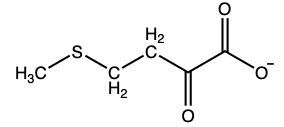
Lysine
Methionine
Cysteine
Glutamate
Draw α-keto acid produced by transamination of glutamine.
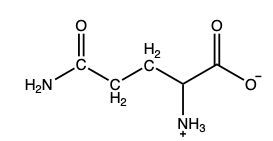
Do you want more practice?
More setsHere’s what students ask on this topic:
What is the first stage of amino acid catabolism?
The first stage of amino acid catabolism is the removal of the amino group in the liver. This process occurs in two steps: transamination and oxidative deamination. In transamination, the amino group of an amino acid is exchanged with the keto group of an alpha-keto acid, typically forming glutamate. This reaction is reversible and occurs in the cytosol. The second step, oxidative deamination, involves the oxidation of glutamate back to alpha-ketoglutarate, producing an ammonium ion (NH4+). This step occurs in the mitochondrial matrix and is facilitated by the enzyme glutamate dehydrogenase. The ammonium ion then enters the urea cycle for excretion.
 Created using AI
Created using AIWhat is transamination in amino acid catabolism?
Transamination is a reversible reaction in amino acid catabolism where the amino group of an amino acid is exchanged with the keto group of an alpha-keto acid. This process is catalyzed by the enzyme transaminase (also known as aminotransferase). The typical result of transamination is the formation of glutamate from alpha-ketoglutarate. The reaction can be summarized as follows:
Here, R1-NH2 represents the amino acid, and R2-C(O)-COOH represents the alpha-keto acid. The exchange results in a new amino acid and a new alpha-keto acid.
 Created using AI
Created using AIWhat is oxidative deamination and its role in amino acid catabolism?
Oxidative deamination is the second step in amino acid catabolism, where glutamate is oxidized back to alpha-ketoglutarate, producing an ammonium ion (NH4+). This reaction is catalyzed by the enzyme glutamate dehydrogenase and involves the reduction of NAD+ to NADH. The overall reaction can be summarized as:
The ammonium ion produced enters the urea cycle for excretion, while NADH is used in cellular respiration to generate ATP. This process highlights the interconnectedness of amino acid metabolism and energy production.
 Created using AI
Created using AIWhat enzymes are involved in the removal of the amino group during amino acid catabolism?
The removal of the amino group during amino acid catabolism involves two key enzymes: transaminase (also known as aminotransferase) and glutamate dehydrogenase. Transaminase catalyzes the transamination reaction, where the amino group of an amino acid is exchanged with the keto group of an alpha-keto acid, typically forming glutamate. Glutamate dehydrogenase catalyzes the oxidative deamination of glutamate, converting it back to alpha-ketoglutarate and producing an ammonium ion (NH4+). These enzymes play crucial roles in facilitating the removal of the amino group and linking amino acid catabolism to energy production and the urea cycle.
 Created using AI
Created using AIWhat is the role of the urea cycle in amino acid catabolism?
The urea cycle plays a critical role in amino acid catabolism by converting toxic ammonium ions (NH4+) produced during oxidative deamination into urea, which is then excreted in the urine. This cycle occurs primarily in the liver and involves several steps and enzymes. The overall reaction can be summarized as:
This process detoxifies ammonia, a byproduct of amino acid catabolism, and ensures its safe removal from the body. The urea cycle is essential for maintaining nitrogen balance and preventing the accumulation of toxic ammonia in the bloodstream.
 Created using AI
Created using AIYour GOB Chemistry tutor
- What is the structure of the α-keto acid formed by transamination of the amino acid phenylalanine (Phe)? Refer...
- Unlike most amino acids, branched-chain amino acids are broken down in tissues other than the liver. Using Tab...
- What is the structure of the α-keto acid formed from transamination of the following amino acids?a. Glutamic a...
- In general, how does oxidative deamination differ from transamination?
- Write the structure of the α-keto acid produced by oxidative deamination of the following amino acids (Refer t...
- What other product is formed in oxidative deamination besides an α-keto acid?
- Draw the condensed structural formula for the α-keto acid produced from each of the following in transaminatio...
- Draw the condensed structural formulas for the products of the reaction of aspartate and α-ketoglutarate which...
- Name the reaction that removes nitrogen from an α-amino acid, forming an α-keto acid.
